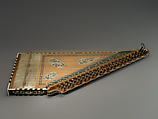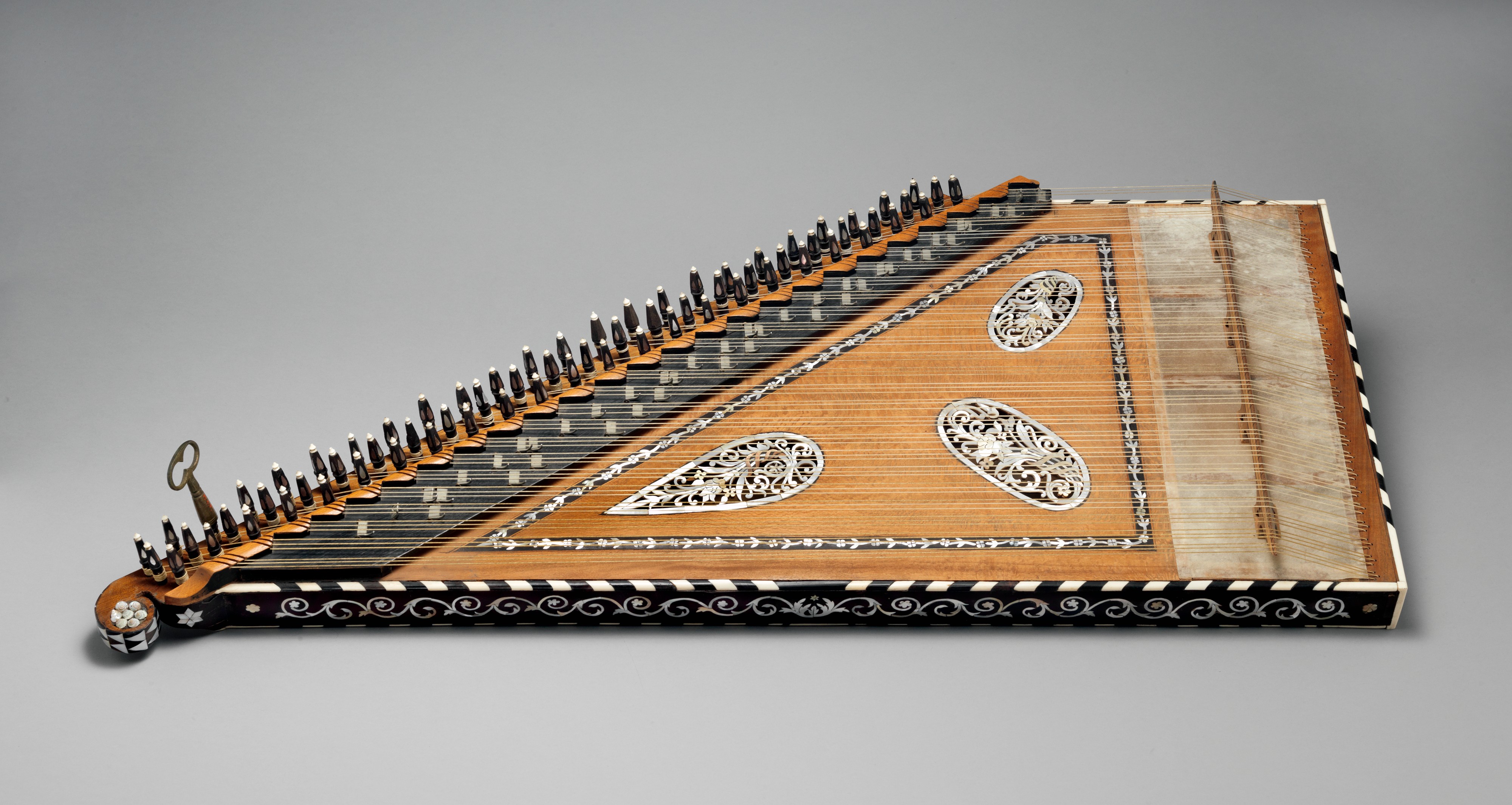Qānūn
Although the term qānūn(kanun) appears in the thirteenth century, the trapezoidal plucked zither (psaltery) used today probably originated in Egypt or Syria during the 18th century. Today it is distributed throughout the Middle East, North Africa and parts of Asia. The adjustable levers on the oblique side (player's left), called mandal ("that which supports") in Turkish and orabe ("carriage") in Arabic, raise the pitch of each triple course of gut or nylon strings. This permits the player to use several tones, often shown as scales, that satisfy a makam (a melodic pattern combined with stock phrases and ornaments). The bridge supporting the strings is placed upon a belly ("wajh") traditionally made of fishskin. Placed on a small table the kanun's 72 strings, grouped in 24 courses, are plucked with metal plectra attached to the player's index fingers. Modern kanuns are larger than this 19th-century model.
#Demonstration of modern qanun by Tamer Pinarbasi, 2018. "Gurbet O Kadar" by Yidirim Gurses, performed by Tamer Pinarbasi, qanun, Ara Dinkjian, ud, and Glen Velez, frame drum.
Due to rights restrictions, this image cannot be enlarged, viewed at full screen, or downloaded.
This artwork is meant to be viewed from right to left. Scroll left to view more.



